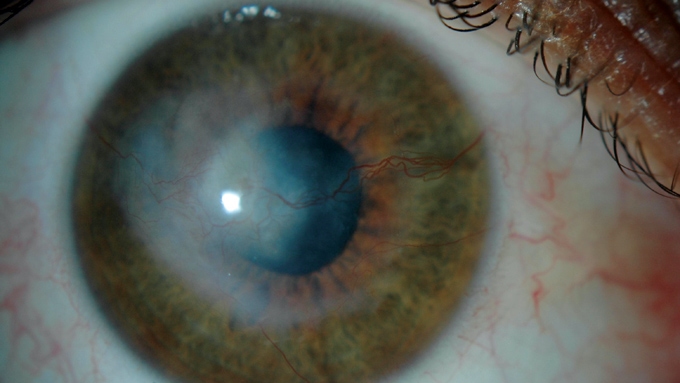What is keratitis?
Keratitis is an inflammation that affects the cornea. The cornea is the most anterior and transparent structure of the eyeball.
If it only affects the most anterior part of the cornea (the epithelium), it is called superficial keratitis. It is the most frequent. It can usually be cured without after-effects.
If it affects deeper layers of the cornea, it is called ulcerative keratitis. This is less common, but can be serious. Occasionally, it produces scarring on the cornea (leukoma), which, if centrally located, can compromise vision.
What causes keratitis?
Keratitis has many possible causes. The most common are:
- Dry eye: dry eye can cause corneal lesions. The lesions are usually superficial in the form of small spots that primarily affect the middle and lower parts of the cornea. Occasionally, dry eye can cause serious damage that is difficult to manage
- Viral: the most common in this group is herpetic keratitis. This type of keratitis is severe, because it occurs in outbreaks and can leave large residual corneal leukomas, in which corneal transplantation is indicated. Early diagnosis and treatment with antiviral drugs is essential
- Bacterial (fungal, amoebic or parasitic): this can be the result of previous erosion that has become infected. Contact lens wearers are much more prone to corneal infections. Other times, no cause can be identified. These types of keratitis are always serious and require prompt diagnosis and the early application of intensive fortified antibiotic eye drop treatment. The evolution of these ulcers is occasionally highly aggressive and can leave serious and permanent after-affects
- Other causes: toxic substances (caustic burns or irritants that come into contact with the eye), allergies and exposure keratitis (abnormal closure of the eyelids, which can range from mild to very severe keratitis)
How can keratitis be prevented?
The circumstances that can cause the condition should be avoided whenever possible: use artificial tears to relieve the symptoms of dry eye, wear sunglasses, visit the ophthalmologist in case of trauma (injuries that can become infected), ensure meticulous hygiene when cleaning contact lens, etc.
In many cases, however, there are no guidelines to prevent keratitis. It is important to visit the ophthalmologist, if any of the above symptoms appear. As always, rapid treatment improves the prognosis.
Symptoms
Keratitis causes pain, tearing and intense photophobia (intolerance to light). Depending on the affected area, it can also cause a significant decrease in visual acuity.
Treatments
Treatment for keratitis is commonly medical, although surgery might be required in some cases.
Specialists who treat this pathology
IMO Institute of Ocular Microsurgery
Josep María Lladó, 3
08035 Barcelona
Phone: (+34) 934 000 700
E-mail: international@imo.es
See map on Google Maps
By car
GPS navigator coordinates:
41º 24’ 38” N – 02º 07’ 29” E
Exit 7 of the Ronda de Dalt (mountain side). The clinic has a car park with more than 200 parking spaces.
By bus
Autobus H2: Rotonda de Bellesguard, parada 1540
Autobus 196: Josep Maria Lladó-Bellesguard, parada 3191
Autobuses H2, 123, 196: Ronda de Dalt – Bellesguard, parada 0071
How to arrive at IMO from:
IMO Madrid
C/ Valle de Pinares Llanos, 3
28035 Madrid
Phone: (+34) 910 783 783
See map in Google Maps
Public transport
Metro Lacoma (líne 7)
Autobuses:
- Lines 49 & 64, stop “Senda del Infante”
- Line N21, stop “Metro Lacoma”
Timetables
Patient care:
Monday to Friday, 8 a.m. to 9 p.m.
IMO Andorra
Av. de les Nacions Unides, 17
AD700 Escaldes-Engordany, Andorra
Phone: (+376) 688 55 44
See map in Google Maps
IMO Manresa
C/ Carrasco i Formiguera, 33 (Baixos)
08242 – Manresa
Tel: (+34) 938 749 160
See map in Google Maps
Public transport
FGC. Line R5 & R50 direction Manresa. Station/Stop: Baixador de Manresa
Timetables
Monday to Friday, 09:00 A.M – 07:00 PM










